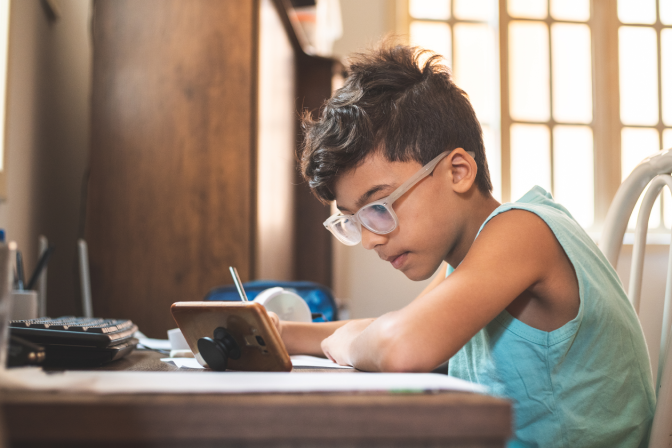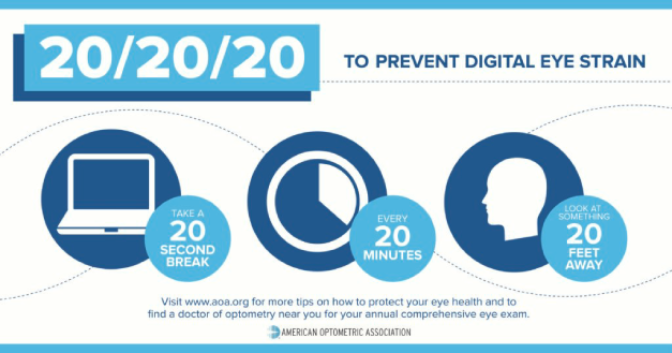Buy one pair of eyeglasses, get a second pair 50% off!
*Restrictions apply. Click here for details.
Screen Time Consideration for Kids

According to the American Academy of Ophthalmology, there are many reasons for parents to be thoughtful about how much screen time they allow their children. As many families prepare to spend more time inside due to the novel Coronavirus outbreak, it’s important to consider how much screen time kids are getting, and when it’s time to give their eyes a break.
Effects of Screen Use on Childrens’ Eyes
The American Academy of Ophthalmology does not have specific recommendations for amount of screen time for children. But parents should be aware of the possible effects of screen use on children’s eyes, as well as the broader health concerns raised by other groups like the WHO.
Digital Eye Strain

Digital eye strain isn’t a single eye condition, like glaucoma or pink eye. It’s a name for the kinds of symptoms that people experience when they spend too long looking at a screen. These symptoms can include dry eyes, itchy eyes, blurry vision and headaches. These symptoms are temporary and no permanent damage is being done to the eyes.
The easiest way to avoid digital eye strain (or eye strain from any extended near-focus task like reading or sewing) is to make sure to blink often and to look up from your screen or close-up work every 20 minutes and focus at least 20 feet away for 20 seconds. This strategy of frequent re-focusing is called the 20-20-20 rule, and lets the eyes relax and reset.
Eye Comfort and Safety Tips for Children and Screens
The best way to deal with possible effects of screens on children’s eyes and vision is to help them set good habits for use. These same tips are good practices for adults and anyone suffering from chronic dry eyes or eye strain.
Follow the 20-20-20 rule: every 20 minutes, look at least 20 feet away for 20 seconds.
Set a timer to remind the child how often to look into the distance.
Alternate reading an e-book with a real book and encourage kids to look up and out the window every other chapter.
After completing a level in a video game, look out the window for 20 seconds.
Pre-mark books with a paperclip every few chapters to remind your child to look up. On an e-book, use the “bookmark” function for the same effect.
Avoid using screens outside or in brightly lit areas, where the glare on the screen can create strain.
Adjust the brightness and contrast of the screen so that it feels comfortable.
Use good posture when using a screen. Poor posture can contribute to muscle tightness and headaches associated with eye strain.
Encourage your child to hold digital media farther away: 18 to 24 inches is ideal.
Remind them to blink when watching a screen.
